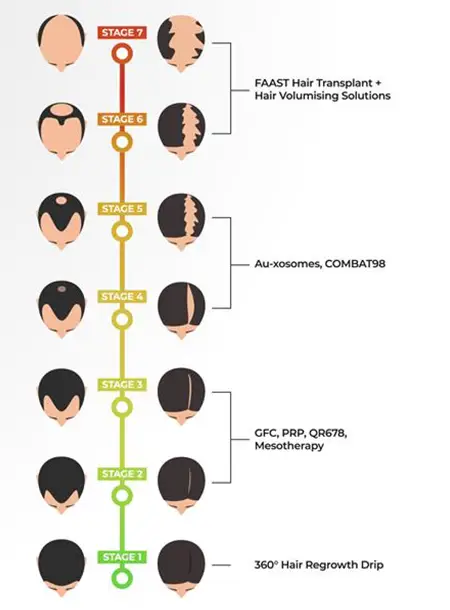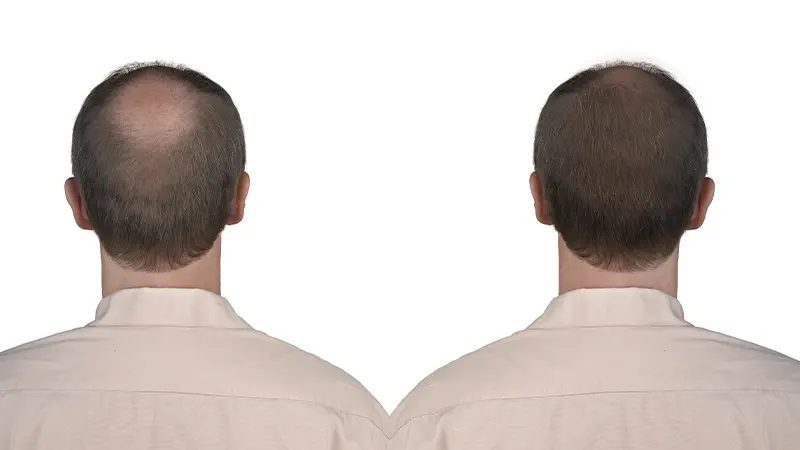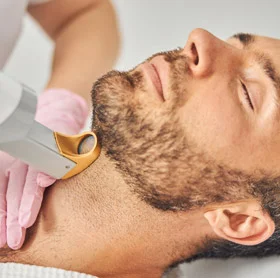Signs & Symptoms of Male Pattern Hair Loss
- Receding hairline: The hairline gradually moves backward, forming an "M" shape.
- Thinning at the crown: Hair becomes sparse and starts to thin at the top of the head.
- Hair loss progression: The affected areas may expand, resulting in larger bald spots or complete baldness in severe cases.
- Increased hair shedding: Hair shedding may be more noticeable during showers, brushing, or on pillowcases.
Stages of Male Pattern Hair Loss
Stage 1: The first stage is characterised by a mature hairline, with no visible signs of hair loss or receding at the temples. Hair density is typically normal.
Stage 2: In this stage, there is a slight recession of the hairline at the temples, forming a mild "M" shape. However, the hair loss is still relatively minimal, and it may go unnoticed by some individuals.
Stage 3: Hair loss becomes more noticeable at this stage, with a deeper recession at the temples, creating a more pronounced "M" shape. There may also be thinning or loss of hair at the crown (vertex) area.
Stage 4: Hair loss progresses further at the temples and crown, resulting in a more distinct "M" shape. The hairline may recede significantly, and the thinning or balding at the crown becomes more prominent.
Stage 5: The "M" shape of the hairline becomes more severe, and the hair loss at the crown area progresses. The two areas of hair loss may eventually merge, leaving a band of hair that separates the receding hairline from the balding crown.-
Stage 6: At this stage, the bridge of hair separating the receding hairline and the balding crown diminishes further. The hair loss becomes more extensive, leaving larger areas of visible scalp.
Stage 7: The most advanced stage of male pattern hair loss, stage 7 is characterised by extensive hair loss across the entire top of the scalp. Only a narrow band of hair remains along the sides and back of the head.









